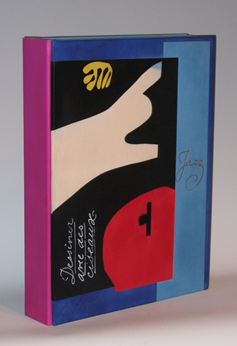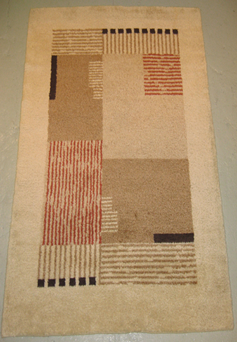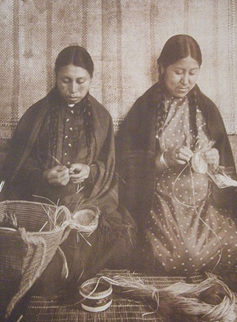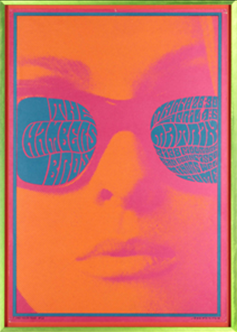Spotlight
WIENER WERKSTÄTTE
 The Wiener Werkstaette was founded in 1903 with funding by the Viennese business man Fritz Waerndorfer as an artists’ co-operative with Josef Hoffmann and Koloman Moser as the head designers. The Wiener Werkstaette produced and marketed elegant tableware and exquisitely designed and crafted everyday objects and jewelry made of silver and metal, glass, ceramics. leather and wood. These works generally emphasized a new geometric concept of design inspired by architectural shapes and forms that led the direction of design throughout the 20th century. The single most important commission of the Wiener Werkstaette was the grand Palais Stoclet in Brussels which was designed by Hoffmann and completely furnished and accessorized with objects produced by the Wiener Werkstaette. Hoffmann and Moser were joined by numerous other talented designers such as Otto Prutscher, Dagobert Peche, Oswald Haerdtl, Michael Powolny, Berthold Loeffler, Mathilde Flogl, Hilda Jesser, Vally Wieselthier and others. The Wiener Werkstaette became known as a brand of its own and enjoyed many years of commercial success and production was eventually expanded to include textile design, fashionable clothing and millinery. Outside of Vienna, showrooms were opened in Karlsbad, Marienbad, Zurich, Berlin and later New York City and closed its operations in 1932.
The Wiener Werkstaette was founded in 1903 with funding by the Viennese business man Fritz Waerndorfer as an artists’ co-operative with Josef Hoffmann and Koloman Moser as the head designers. The Wiener Werkstaette produced and marketed elegant tableware and exquisitely designed and crafted everyday objects and jewelry made of silver and metal, glass, ceramics. leather and wood. These works generally emphasized a new geometric concept of design inspired by architectural shapes and forms that led the direction of design throughout the 20th century. The single most important commission of the Wiener Werkstaette was the grand Palais Stoclet in Brussels which was designed by Hoffmann and completely furnished and accessorized with objects produced by the Wiener Werkstaette. Hoffmann and Moser were joined by numerous other talented designers such as Otto Prutscher, Dagobert Peche, Oswald Haerdtl, Michael Powolny, Berthold Loeffler, Mathilde Flogl, Hilda Jesser, Vally Wieselthier and others. The Wiener Werkstaette became known as a brand of its own and enjoyed many years of commercial success and production was eventually expanded to include textile design, fashionable clothing and millinery. Outside of Vienna, showrooms were opened in Karlsbad, Marienbad, Zurich, Berlin and later New York City and closed its operations in 1932.
View Wiener Werkstaette works here.
GERMAN DESIGN
 New ideas in Germany were disseminated through numerous German periodicals such as Pan and Die Jugend; Simplicissimus, Dekorative Kunst and Deutsche Kunst und Dekoration. During this time there was a growing interest in the evolution of industrial design and the applied arts. Initially Jugendstil was centered in Munich but then spread to other areas such as the Darmstadt Colony, Berlin, Karlsruhe and Dresden. The Germans sought to create designs that were appropriate for new technologies. This led to the founding in 1897 of the Vereinigte Werkstaetten fuer Kunst und Handwerk in Munich. In 1907 the members of the Deutscher Werkbund met to face the problem of how to reconcile art with industry, ornamentation and functionalism. Design became more abstract, less floral and more simplified and geometric. The desire for a unified fusion of fine and applied arts led to the formation in 1919 of the important Staatliche Bauhaus, first in Weimar and later in Dessau, under the leadership of the architect Walter Gropius. The Bauhaus (1919-1933) was arguably the most important design school of the 20th century and brought together influential artist-teachers such as Christian Dell, Moholy-Nagy, Wassily Kandinsky, Oskar Schlemmer and Johannes Itten with talented students including Marianne Brandt, Marcel Breuer, Wilhelm Wagenfeld, Werner Drewes, Herbert Bayer, Naum Slutzky, Josef & Anni Albers, Lux Feininger and Xanti Schawinsky among many others.
New ideas in Germany were disseminated through numerous German periodicals such as Pan and Die Jugend; Simplicissimus, Dekorative Kunst and Deutsche Kunst und Dekoration. During this time there was a growing interest in the evolution of industrial design and the applied arts. Initially Jugendstil was centered in Munich but then spread to other areas such as the Darmstadt Colony, Berlin, Karlsruhe and Dresden. The Germans sought to create designs that were appropriate for new technologies. This led to the founding in 1897 of the Vereinigte Werkstaetten fuer Kunst und Handwerk in Munich. In 1907 the members of the Deutscher Werkbund met to face the problem of how to reconcile art with industry, ornamentation and functionalism. Design became more abstract, less floral and more simplified and geometric. The desire for a unified fusion of fine and applied arts led to the formation in 1919 of the important Staatliche Bauhaus, first in Weimar and later in Dessau, under the leadership of the architect Walter Gropius. The Bauhaus (1919-1933) was arguably the most important design school of the 20th century and brought together influential artist-teachers such as Christian Dell, Moholy-Nagy, Wassily Kandinsky, Oskar Schlemmer and Johannes Itten with talented students including Marianne Brandt, Marcel Breuer, Wilhelm Wagenfeld, Werner Drewes, Herbert Bayer, Naum Slutzky, Josef & Anni Albers, Lux Feininger and Xanti Schawinsky among many others.
View German Design works here.
RARE BOOK COLLECTION
 To both complement and punctuate Historical Design’s art and decorative arts research library, outstanding graphic and extremely rare artist volume books were added through the years. In our technological world today, the tactile sensation of fine papers and the written word still have an incredible place in people’s lives. Fine and rare books offer the opportunity to be intimate with an historical art form that has been around for many centuries. In consideration of the long-term preservation of these rare works, artistic individual storage boxes were commissioned. The artistic essence of these rare books are reinterpreted in fine leather bookbinding as separate boxes to house the books with a contemporary view of the subject and artwork. The books range from Henri Matisse’s “Jazz” portfolio, considered the most important book of the 20th Century to many other highlights that include Hector Guimard’s “Le Castel Béranger” portfolio, Joan Miro’s & Tristan Tzara’s “Parler Seul”, Fernand Leger’s & Blaise Cendrars “La Fin du Monde” Georges Hugnet’s “Tout Beau mon Coeur”, Fortunato Depero’s “Depero Futurista” (the Bolt Book), Filippo Tommaso Marinetti’s “Les Mots en Liberte Futuristes” and rounding out the 20th Century with Andy Warhol’s “The Philosophy of Andy Warhol: From A to B and Back Again”, Robert Indiana’s “Numbers”, Walasse Ting’s “ONE CENT LIFE” and Madonna’s “Sex” book.
To both complement and punctuate Historical Design’s art and decorative arts research library, outstanding graphic and extremely rare artist volume books were added through the years. In our technological world today, the tactile sensation of fine papers and the written word still have an incredible place in people’s lives. Fine and rare books offer the opportunity to be intimate with an historical art form that has been around for many centuries. In consideration of the long-term preservation of these rare works, artistic individual storage boxes were commissioned. The artistic essence of these rare books are reinterpreted in fine leather bookbinding as separate boxes to house the books with a contemporary view of the subject and artwork. The books range from Henri Matisse’s “Jazz” portfolio, considered the most important book of the 20th Century to many other highlights that include Hector Guimard’s “Le Castel Béranger” portfolio, Joan Miro’s & Tristan Tzara’s “Parler Seul”, Fernand Leger’s & Blaise Cendrars “La Fin du Monde” Georges Hugnet’s “Tout Beau mon Coeur”, Fortunato Depero’s “Depero Futurista” (the Bolt Book), Filippo Tommaso Marinetti’s “Les Mots en Liberte Futuristes” and rounding out the 20th Century with Andy Warhol’s “The Philosophy of Andy Warhol: From A to B and Back Again”, Robert Indiana’s “Numbers”, Walasse Ting’s “ONE CENT LIFE” and Madonna’s “Sex” book.
View Rare Book Collection here.
RUGS
 The Art Deco movement dominated the worlds of art and design during the 1920’s and 30’s. This style, popularized as the result of the 1925 International Exposition of Modern Industrial and Decorative Arts in Paris, was integrated in everything spanning from architecture to rug design. Art deco rugs were heavily influenced by cubism, abstraction and modern art. Rugs by the American designer Marion Dorn and her husband Edward McKnight Kauffer created in their London studio epitomize the angular style of art deco designs and they were prominent leaders in their field. In France, among the most well known Art Deco rug designers were Ivan Da Silva Bruhns and Paule Leleu. The linear rugs designed by Ivan Da Silva Bruhns drew their inspiration from Oceanic, African and Pre-Columbian arts, in contrast to those by Leleu, who generally favored symmetrical arrangements and repeating geometric motifs. In contrast to the Art Deco rugs of France, those from Sweden tended to be more restrained in their compositions and smaller in size. However, like Marion Dorn in England, Ingegerd Torhamn, also a woman rug designer in Sweden applied Cubist painting like compositions to her hand knotted wool rugs. Many of these rare examples were exhibited at the important Stockholm Exhibition in 1930. After World War II rug design had a renaissance with Post-War graphics and continues today reflecting the genre of popular design and graphics.
The Art Deco movement dominated the worlds of art and design during the 1920’s and 30’s. This style, popularized as the result of the 1925 International Exposition of Modern Industrial and Decorative Arts in Paris, was integrated in everything spanning from architecture to rug design. Art deco rugs were heavily influenced by cubism, abstraction and modern art. Rugs by the American designer Marion Dorn and her husband Edward McKnight Kauffer created in their London studio epitomize the angular style of art deco designs and they were prominent leaders in their field. In France, among the most well known Art Deco rug designers were Ivan Da Silva Bruhns and Paule Leleu. The linear rugs designed by Ivan Da Silva Bruhns drew their inspiration from Oceanic, African and Pre-Columbian arts, in contrast to those by Leleu, who generally favored symmetrical arrangements and repeating geometric motifs. In contrast to the Art Deco rugs of France, those from Sweden tended to be more restrained in their compositions and smaller in size. However, like Marion Dorn in England, Ingegerd Torhamn, also a woman rug designer in Sweden applied Cubist painting like compositions to her hand knotted wool rugs. Many of these rare examples were exhibited at the important Stockholm Exhibition in 1930. After World War II rug design had a renaissance with Post-War graphics and continues today reflecting the genre of popular design and graphics.
AFRICAN & TRIBAL
 African art constitutes one of the most diverse legacies on earth. Though many casual observers tend to generalize “traditional” African art, the continent consists of a wide diversity of people, societies, and civilizations, each with a unique visual culture. Despite this diversity, there are some unifying artistic themes when considering the totality of the visual culture from the continent of Africa. Most African sculpture was historically in wood and other organic materials that have not survived from earlier than at most a few centuries ago; older pottery figures are found from a number of areas. Masks are important elements in the art of many peoples, along with human figures, often highly stylized. There is a vast variety of styles, often varying within the same context of origin depending on the use of the object, but wide regional trends are apparent; sculpture is most common among groups in West Africa. Direct images of deities are relatively infrequent, but masks in particular are or were often made for religious ceremonies. African masks were an influence on European Modernist art, which was inspired by their lack of concern for naturalistic depiction. African artworks also tend to favor visual abstraction over naturalistic representation. This is because many African artworks generalize stylistic norms. Ancient Egyptian art, also usually thought of as naturalistically depictive, makes use of highly abstracted and regimented visual canons, especially in painting, as well as the use of different colors to represent the qualities and characteristics of an individual being depicted. Tribal artwork can be found as a notable form of expression across the world from the Hill tribes of China to the Amazon Basin of Brazil.
African art constitutes one of the most diverse legacies on earth. Though many casual observers tend to generalize “traditional” African art, the continent consists of a wide diversity of people, societies, and civilizations, each with a unique visual culture. Despite this diversity, there are some unifying artistic themes when considering the totality of the visual culture from the continent of Africa. Most African sculpture was historically in wood and other organic materials that have not survived from earlier than at most a few centuries ago; older pottery figures are found from a number of areas. Masks are important elements in the art of many peoples, along with human figures, often highly stylized. There is a vast variety of styles, often varying within the same context of origin depending on the use of the object, but wide regional trends are apparent; sculpture is most common among groups in West Africa. Direct images of deities are relatively infrequent, but masks in particular are or were often made for religious ceremonies. African masks were an influence on European Modernist art, which was inspired by their lack of concern for naturalistic depiction. African artworks also tend to favor visual abstraction over naturalistic representation. This is because many African artworks generalize stylistic norms. Ancient Egyptian art, also usually thought of as naturalistically depictive, makes use of highly abstracted and regimented visual canons, especially in painting, as well as the use of different colors to represent the qualities and characteristics of an individual being depicted. Tribal artwork can be found as a notable form of expression across the world from the Hill tribes of China to the Amazon Basin of Brazil.
View African & Tribal works here.
INDIAN BASKETS
 The tradition behind the crafting of Native American Indian Baskets is not only ancient and widespread, but also extraordinarily rich. Basic techniques made it accessible to many artisans and allowed Native Americans to achieveand maintain an impressive early standard of quality in the craft. NativeAmerican Indians are generally acknowledged to have produced the most varied, technically advanced and aesthetically significant baskets of any civilization in history. The handcrafted products of Alaska’s Aleut, California’s Pomo, Nevada’s Washo and Louisiana’s Chitimacha are unparalleled and must be considered among the great accomplishments of American craftsmanship and design. Basket making is one of the most ancient of human crafts. It is also the most basic of all crafts in its methods and materials. It is a local art, based on materials found in an area and dyes from plants found in that same area, not dependent on foreign or specially processed materials of any kind. Most of the collectible older Native American Indian baskets today were made between 1880-1930. Prior to that, most were utilitarian and used until they fell apart, however after the second world war there was a revival of interest in baskets through various Southwest trading posts that offered Indian baskets, pawn jewelry and various American Indian theme artifacts.
The tradition behind the crafting of Native American Indian Baskets is not only ancient and widespread, but also extraordinarily rich. Basic techniques made it accessible to many artisans and allowed Native Americans to achieveand maintain an impressive early standard of quality in the craft. NativeAmerican Indians are generally acknowledged to have produced the most varied, technically advanced and aesthetically significant baskets of any civilization in history. The handcrafted products of Alaska’s Aleut, California’s Pomo, Nevada’s Washo and Louisiana’s Chitimacha are unparalleled and must be considered among the great accomplishments of American craftsmanship and design. Basket making is one of the most ancient of human crafts. It is also the most basic of all crafts in its methods and materials. It is a local art, based on materials found in an area and dyes from plants found in that same area, not dependent on foreign or specially processed materials of any kind. Most of the collectible older Native American Indian baskets today were made between 1880-1930. Prior to that, most were utilitarian and used until they fell apart, however after the second world war there was a revival of interest in baskets through various Southwest trading posts that offered Indian baskets, pawn jewelry and various American Indian theme artifacts.
View American Indian Baskets here.
ROCK POSTERS (1966-1971)
 Both daring and highly experimental, the San Francisco rock posters produced by Bill Graham and The Family Dog are among the most graphic artworks of the 1960’s. Influenced by the poster designs of earlier Art Nouveau and Secession works by artists such as Alphonse Mucha and Gustav Klimt, talented contemporary artists of the 1960s designed outrageous and dramatic new imagery and highly stylized lettering. Between 1966 and 1971 over 450 colorful and imaginative rock posters were created to announce the most famous rock group bands and their performances in San Francisco. In addition to announcing the concerts themselves, the posters further entreated the hippie culture in San Francisco’s Haight-Ashbury to attend the subsequent dances and become part of what was termed “happenings”. These rock posters were designed by San Francisco artists such as: Wes Wilson, Rick Griffin, Victor Moscoso, Bonnie MacLean, Stanley Mouse & Alton Kelley and others. Historical Design’s collection of vintage 1st edition rock posters was originally purchased by a San Francisco collector in 1973 and were later authenticated by Chet Helms who was directly involved with Bill Graham and the original production of the posters. Chet Helms later became a well-known and respected San Francisco art dealer and was the owner of the gallery, Atelier Dore.
Both daring and highly experimental, the San Francisco rock posters produced by Bill Graham and The Family Dog are among the most graphic artworks of the 1960’s. Influenced by the poster designs of earlier Art Nouveau and Secession works by artists such as Alphonse Mucha and Gustav Klimt, talented contemporary artists of the 1960s designed outrageous and dramatic new imagery and highly stylized lettering. Between 1966 and 1971 over 450 colorful and imaginative rock posters were created to announce the most famous rock group bands and their performances in San Francisco. In addition to announcing the concerts themselves, the posters further entreated the hippie culture in San Francisco’s Haight-Ashbury to attend the subsequent dances and become part of what was termed “happenings”. These rock posters were designed by San Francisco artists such as: Wes Wilson, Rick Griffin, Victor Moscoso, Bonnie MacLean, Stanley Mouse & Alton Kelley and others. Historical Design’s collection of vintage 1st edition rock posters was originally purchased by a San Francisco collector in 1973 and were later authenticated by Chet Helms who was directly involved with Bill Graham and the original production of the posters. Chet Helms later became a well-known and respected San Francisco art dealer and was the owner of the gallery, Atelier Dore.
